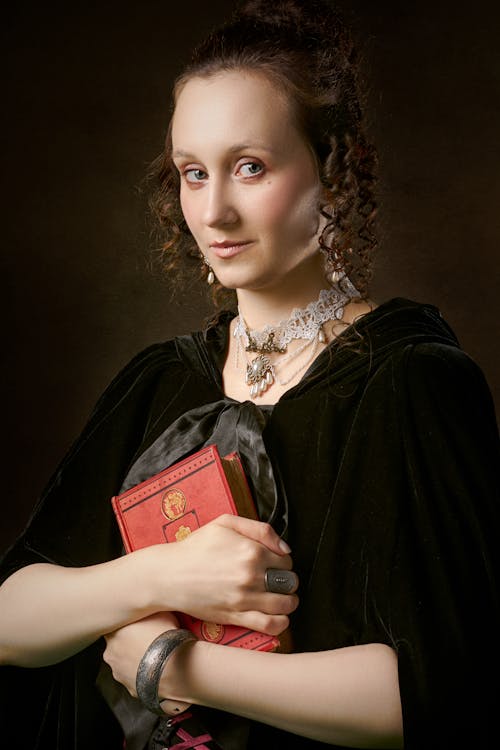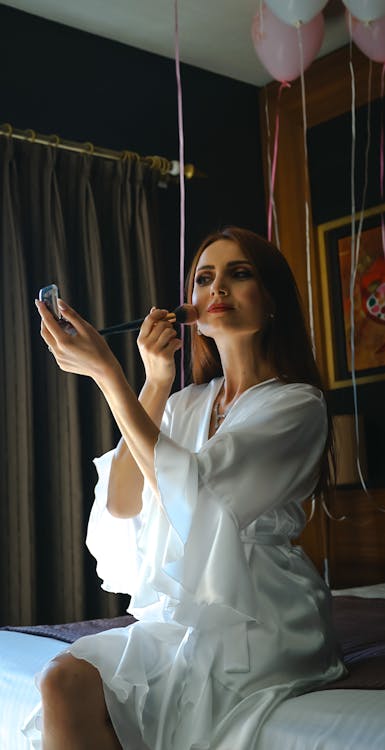The Evolution of Makeup: A Look Back at the History of Cosmetics

Makeup has been a part of human history for thousands of years. From Ancient Egypt to modern-day Hollywood, cosmetics have evolved and transformed over time.
The use of makeup has always been a reflection of society, culture, and individual preferences. In this blog, we will take a look back at the history of cosmetics and explore how makeup has evolved over time.
Ancient Times: The Origins of Makeup
The use of makeup can be traced back to ancient times. In Ancient Egypt, makeup was an essential part of daily life. Both men and women used makeup to protect their skin from the harsh sun, as well as to enhance their appearance. Makeup was also believed to have magical properties that could protect the wearer from evil spirits.
The Egyptians used a variety of natural ingredients to create their makeup. Kohl, a black powder made from lead sulfide, was used to line the eyes and eyebrows. Red ochre, a clay-like substance, was used to create a blush effect on the cheeks and lips. Henna was used to dye the hair and nails.
In Ancient Greece and Rome, makeup was used primarily by women. White lead and chalk were used to create a pale complexion, and red pigment was used on the lips and cheeks. The use of makeup was seen as a sign of social status, and women who could afford it would spend hours applying and perfecting their makeup.
The Middle Ages: The Decline of Makeup
During the Middle Ages, the use of makeup declined in popularity. The Christian church viewed makeup as a sin, and many people believed that only witches and prostitutes wore makeup. The use of makeup was seen as an attempt to deceive others and was discouraged.
However, makeup did not completely disappear during this time. Women would use natural ingredients, such as berries and plants, to create a subtle flush on their cheeks and lips. They would also use powders and oils to protect their skin from the sun and prevent aging.
The Renaissance: The Return of Makeup
During the Renaissance, makeup made a comeback. The era was characterized by a renewed interest in art, literature, and culture, and makeup was seen as a way to enhance beauty and express individuality.
Women would use lead-based white powder to create a pale complexion, and rouge was used on the cheeks and lips, like lip tints. Eyebrows were plucked and shaped, and kohl was used to line the eyes. The use of makeup was seen as a sign of beauty and sophistication, and women would spend hours perfecting their looks.
The 18th and 19th Centuries: Industrialization and Mass Production
The 18th and 19th centuries saw the rise of industrialization and mass production, which had a significant impact on the cosmetics industry. The invention of the steam engine and other machinery allowed for the mass production of cosmetics, making them more affordable and accessible to the masses.
During this time, makeup was still primarily used by women. White lead and rice powder were used to create a pale complexion, and rouge was used on the cheeks and lips. Eye makeup became more elaborate, with false eyelashes and eyebrow pencils becoming popular.
The 20th Century: The Rise of Cosmetics
The 20th century saw a significant shift in the cosmetics industry. Advances in technology and marketing allowed for the development of new products and the expansion of the industry. Makeup became more widely available and affordable, and it became a part of daily life for millions of people around the world.
During the 1920s, the “flapper” look became popular, with women wearing bold red lipstick and heavy eye makeup. In the 1940s, during World War II, makeup became more practical, with women wearing less elaborate makeup due to wartime restrictions.
The 1950s saw the rise of Hollywood glamour, with women emulating the looks of movie stars like Marilyn Monroe and Elizabeth Taylor. Heavy makeup, cat-eye eyeliner, and bold red lips became popular.
In the 1960s, the “mod” look emerged, with pale skin, heavy eye makeup, and false eyelashes. This look was popularized by fashion icon Twiggy and was a departure from the glamour of the 1950s.
The 1970s saw a return to more natural looks, with minimal makeup and a focus on skincare. This trend continued into the 1980s, with the rise of the “no-makeup” makeup look.
The 1990s saw a return to bolder looks, with dark lipstick and grunge-inspired makeup becoming popular. The 2000s saw the rise of reality TV and social media, which had a significant impact on the cosmetics industry. Influencers and celebrities became the face of many makeup brands, and the industry became more focused on trends and viral moments.
Today, makeup is more diverse and inclusive than ever before. The industry has seen a rise in products for a range of skin tones and types, and there is a growing emphasis on natural and organic products.
The Future of Makeup
As the cosmetics industry continues to evolve, it is likely that we will see even more emphasis on sustainability, inclusivity, and innovation. There is a growing demand for eco-friendly and cruelty-free products, and brands are being held accountable for their impact on the environment and society. 100% PURE is a brand that embraced this responsibility and focuses on the future.
Technology is also likely to play a significant role in the future of cosmetics. Augmented reality and virtual try-on technology allow consumers to experiment with different products and look before making a purchase. Smart cosmetics, which use sensors and data to customize products to individual skin types and preferences, could become more widely available.

The evolution of makeup has been a reflection of society and culture throughout history. From Ancient Egypt to modern-day Hollywood, makeup has been used for a variety of reasons, including protection from the sun, enhancing beauty, and expressing individuality.
The cosmetics industry has come a long way, from natural ingredients to mass production, and today’s makeup is more diverse and inclusive than ever before. As the industry continues to evolve, it is likely that we will see even more emphasis on sustainability, inclusivity, and innovation.
The history of makeup is a reminder of the power of beauty to express individuality and create a sense of self. As the industry continues to evolve, it is important to remember the origins of makeup and to embrace the diversity and creativity that it represents.




